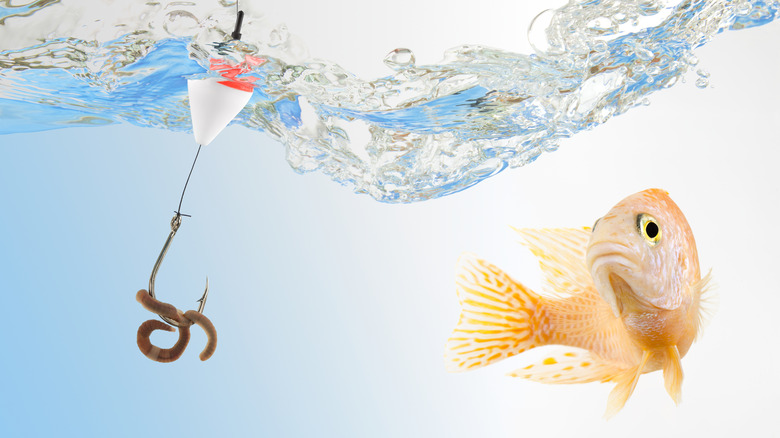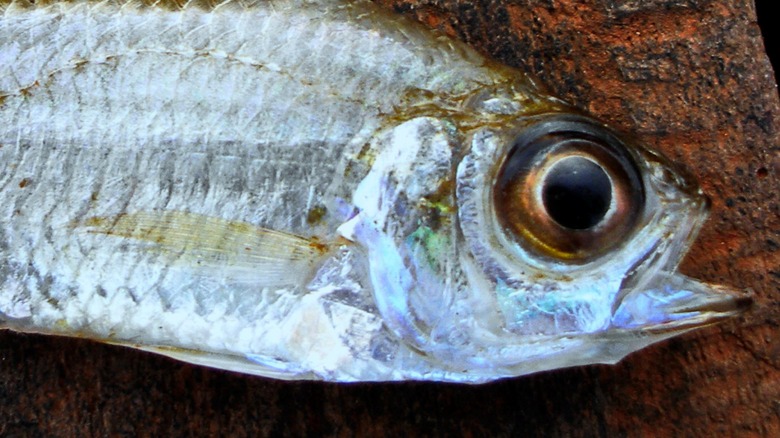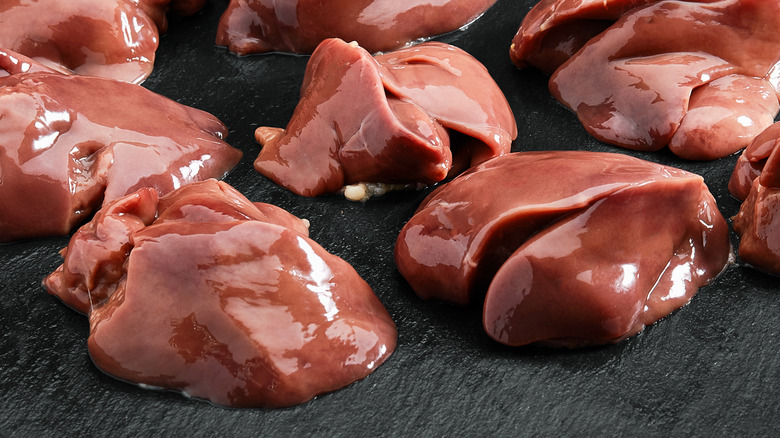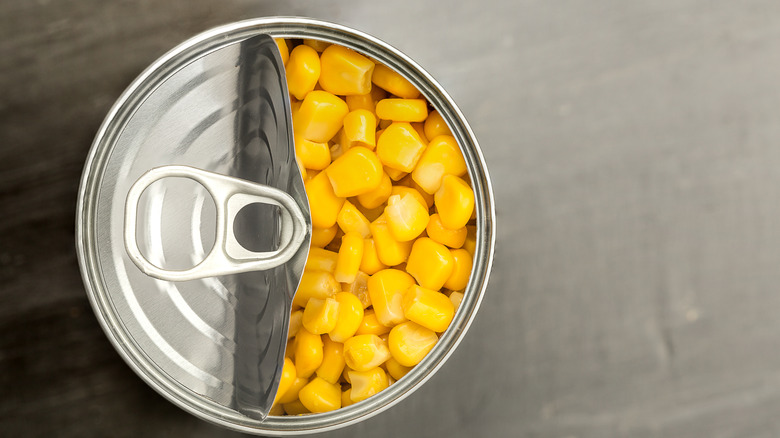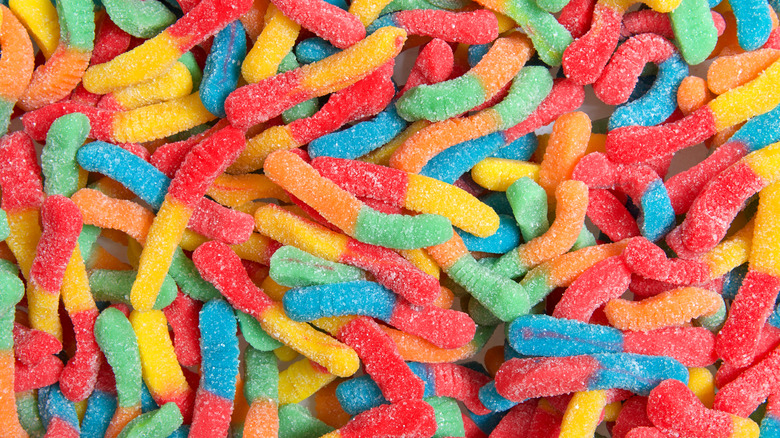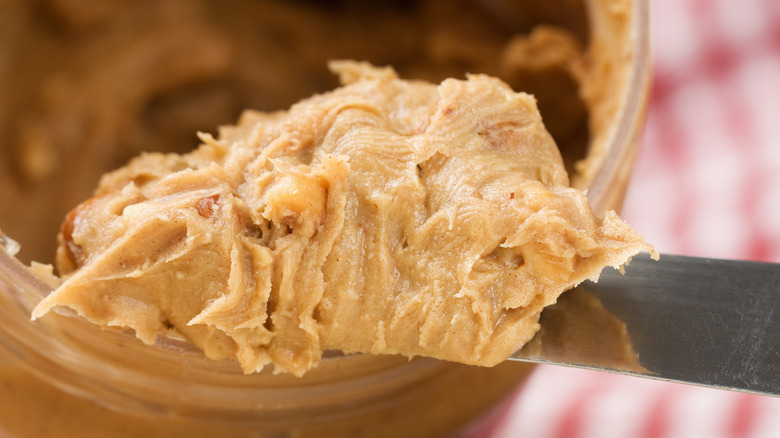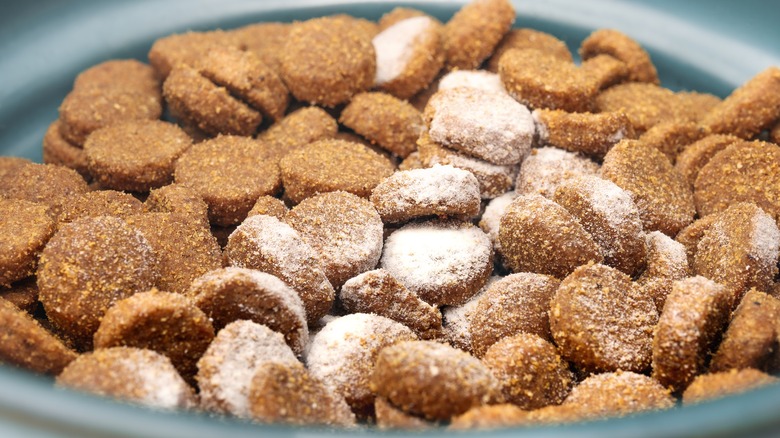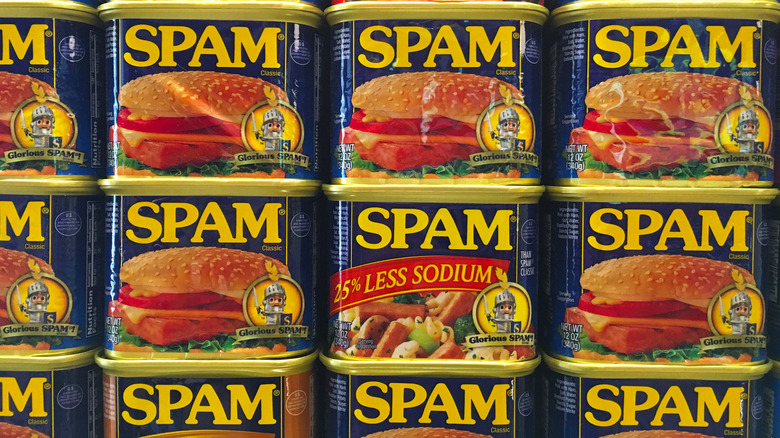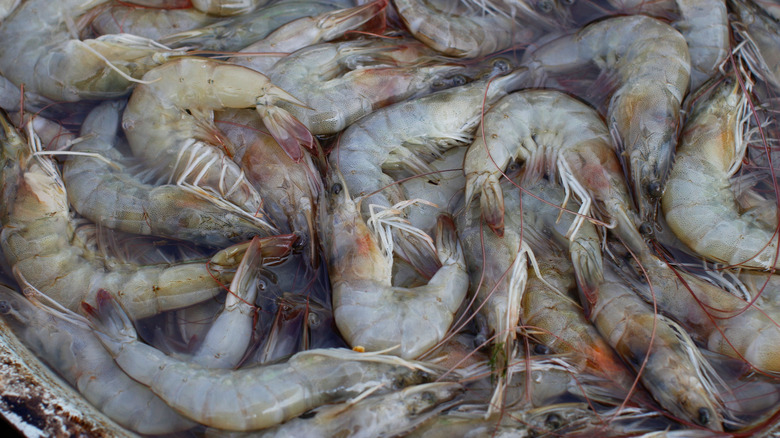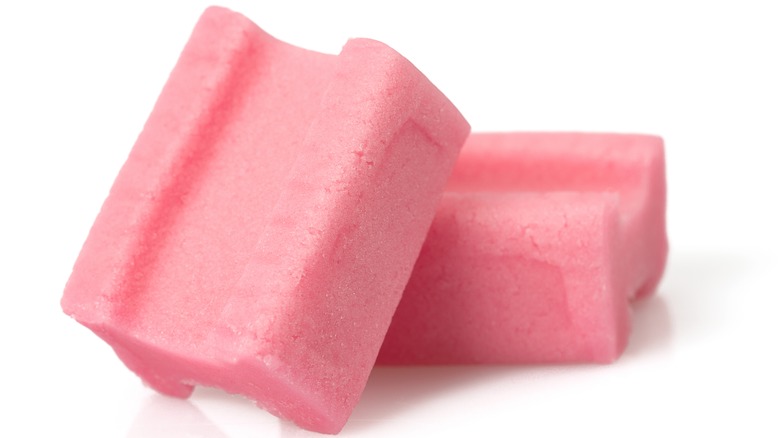Strange Things You Can Use As Fishing Bait
One of the biggest things that anglers debate over is what kind of bait to use. Should it be live, or artificial? Should the flies be tied by the angler, or purchased from a retailer? Should worms be bought from the cooler at the rural gas station, or dug up out of the backyard? These are all valid questions. But why bother doing any of it when you can, quite literally, find all the fishing bait you'll ever need at the grocery store?
Though it may seem strange to know that almost everything you need to go fishing can be found in the aisles of a supermarket, one needs to remember that fish are not nearly as picky about what they eat as humans are. One should also note that the grocery store is not just filled with food. There are other, non-food items you can find in there that will attract fish.
We've decided to compile a list of all the weird things you can find at regular stores that can actually be used as successful fishing bait. Some things on this list you may already be aware of, while some just might just gross you out. All of them, however, will catch fish. So, without further adieu, here are 13 of the strangest things you can use as fishing bait.
Soap
If you've ever been one for catfish fishing, there is a strange, yet highly common, bait that is a magnet for these famous bottom dwellers. If you read the title of this section and blinked twice because you couldn't believe your eyes, you're not deceived. Regular, lye-based bar soap is truly one of the best baits for catfish you can get. The best part? All species of catfish will go for it.
Though some anglers chalk up the catfish's interest in soap as being utterly inexplicable, there is actually a reason these fish love to go after the stuff. See, catfish are attracted to lye, which is an essential ingredient in the soap making process. Like any other odorous bait, the lye scent from the soap will travel through the current and attract the fish. All you need to do is cut the soap into small squares, attach one to the end of your line, and drop it straight into the water.
You could also boil together water, sugar, and soap shavings into a frothy mixture, and store it in ice cube trays in the freezer until they are ready to use. So, the next time you're going out for catfish, bring a bar of soap along with you. It'll help you catch fish, and it'll clean you up if you happen to fall into that muddy water catfish love.
Eyeballs
This may seem gross to non-anglers, but most fishermen and women have absolutely no qualms about plucking the eyes out of other fish, and using them as bait. This is a particularly popular tactic among those who ice fish. They swear by the use of fish eyes to catch wintertime perch and walleyes. So, rest assured, anglers aren't out there hunting down sheep or cows eyes — though we're sure fish would go for those too.
Here's the thing about fish: a good amount of their diet consists of eating other fish. And seeing as nearly all species of fish have eyes, using them as bait is something of a no brainer. They look, smell, and taste exactly like what the perch and walleye are eating below the ice. It's actually considered something of a super bait that drives fish absolutely wild, forcing them to open their mouths wide to take the hook.
Fish eyes don't only apply to ice fishing, though this is where they are most commonly used. You can take eyes out of minnow bait, or remove them from fish you've already caught, and use them in almost any kind of water. Or, if you're at the grocery store or fish market, just buy a few whole fish, remove their eyes, and keep them in a bag in the freezer. It would be a great way to freak out your family and friends.
Chicken
While humans may eat the majority of the world's chicken, there are other animals who like the taste of its meat just as much. Like fish, for example. Though chicken has primarily been used as a successful bait for catfish, various sections of the bird can be used to catch a number of different types of fish, including trout and bass. And, as one of the more affordable bait options, one whole chicken is going to provide you with a lot of bait stock.
You can use every part of the chicken as fish bait. White and dark meat, organs, and skin will all attract fish. This is mostly due to the strong scent all chicken meat gives off in the water. Think of it like how your kitchen smells after making a good roast chicken, only multiplied. If it smells good to you, chances are the fish will think so too. Raw chicken liver, in particular, is a magnet for fish, because of their bloody appearance.
You can leave the meat raw, or can cook it in any number of different ways. Grilled and boiled chicken seems to work best as the meat toughens just enough that it won't fall apart underwater. A little goes a long way here, so just take small portions of chicken and hook it onto a plain hook or jig and see how quickly the fish come swimming.
Marshmallows
Though you're more used to seeing marshmallows floating in your holiday cup of hot cocoa or oozing out of a s'more, they are actually an excellent option for fishing bait, especially the mini ones. What's the main reason fish love marshmallows? That's easy. It's the same reason we love marshmallows: sugar. It is hard to think of anything more sugar filled than a marshmallow. There is certainly nothing in salt or freshwater that is nearly as sweet.
It's the novelty of this sugary treat that attracts the likes of trout, bass, sunfish, and bluegills to marshmallows as bait. If you want to get really specific, most angling stores carry scented marshmallows. These aren't edible for people, but the added scents, like cheese, help the fish get more interested in the bait. However, the sugar is usually enough to attract them to the hook time and time again. This makes marshmallows a great option for teaching kids how to fish.
The mini marshmallows work best because they can easily fit on the end of a hook or lure, and are small enough to fit inside of most fish mouths. If you don't have minis, you can easily split up a larger marshmallow. And if the fish aren't biting, you can eat the marshmallows as a way of lifting your spirits.
Corn
Canned corn has been a popular and affordable alternative to traditional fishing bait for several generations. Its sweet flavor and aromatic scent draw the likes of wild trout, carp, perch, bass, and panfish. However, one fish that is really attracted to corn are rainbow trout that have been raised in hatcheries. Because they have been grown primarily on pelletized feed, the appearance of corn will not be unfamiliar to them.
However, there is one downside to using corn, particularly if you live in Rhode Island. You see, while the other states either have no mention of corn, or have explicitly stated its legality, the smallest state in the nation has made it illegal to use corn as fishing bait. It is not exactly clear why the Ocean State has chosen to do this, but if you were planning on using corn to catch bluegills in a Rhode Island pond, you're out of luck.
When fishing in the remaining 49 states, simply apply a few kernels to the end of your hook or lure, and cast into areas where fish are common. It is not uncommon for anglers to throw kernels into a spawning pool to attract fish before casting their line in once the fish have gotten a taste. Rest assured, there is no definitive research that proves that corn, or any of the other items on this list, are in any way harmful to a fish's digestive tract.
Gummy Worms
Those gummy worms you bought for Halloween or for making dirt pudding cups can actually go to use as fishing bait. One of the most well-known fishing facts is that our finned friends are very attracted to brightly colored lures. So, gummy worms present themselves as a neon alternative to the earth worms that fish already love to go eat. And it's not only the color that the fish love. They're after the sugar too.
Much like with marshmallows and corn, the high amounts of sugar present in the gummy worms are a novelty item to fish. Species like trout, bass — who will eat just about anything — carp, bluegills, catfish, sunfish, and several other freshwater species will go after gummy worms. There are multiple varieties you can buy. Some anglers have had success with the sour coated ones, catching upwards of a dozen fish in a single afternoon.
Another benefit to gummy worms is that they can be applied to lures in the same fashion as a normal worm. You can break gummy worms apart into smaller pieces and put them on the end of a jig, or you can simply attach them whole to a hook. We recommend the latter, as you get the most wiggle and play doing this. The more you make it look alive, the more a fish will be attracted to it.
Peanut Butter and Cornmeal
Catfish seem to be making multiple appearances on this list. This is because, among anglers, catfish, and carp for that matter, eat a whole host of strange baits. Considering we've already seen that they will eat soap, marshmallows, gummy worms, and chicken livers, learning that peanut butter and cornmeal balls are like dynamite for attracting these fish should come as no shock whatsoever.
While no one can really explain why catfish and carp will go for peanut butter, based on what we've learned from the other lures, the novelty and protein provided should be reason enough. Plus, catfish and carp are not picky eaters in the slightest. They're bottom feeders, after all. To make the bait balls, simply mix together peanut butter and cornmeal, and form them into small balls that can easily attach to the end of a lure or hook. Send these down to the bottom of the river, and the fish are sure to come nibbling. If you're fishing on the ocean, cod will also go after a peanut butter lure.
You can make peanut butter sandwiches or coat your chicken livers in peanut butter or smear it onto the end of your favorite lure. It really doesn't matter how you use the stuff. What matters is that the fish love it and they will come to it.
Hot Dogs
Really? Another way to catch catfish? Now, hold on, hold on. Hot dogs are good for catching a lot more than just catfish. While we may be accustomed to seeing them stuffed inside buns and tossed to watery mouthed patrons at baseball games, hot dogs make for some pretty excellent fish bait. Plus, you can enjoy some yourself while you're out on the water.
Now, hot dogs are known to successfully catch really big catfish. Especially when the dogs have been chopped up and soaked in a solution of red kool-aid and garlic powder. However, catfish are not the only types of fish that love hot dogs. Bass, snappers, bluegills, and carp will also go for these iconic sausages.
You will note, however, that hot dogs are actually more expensive than some of the other baits on this list. Still, that's really negligible if you want to catch the big fish. Besides, if you've got some left over from a barbecue, why not use them up? The salt and meatiness of the hot dogs are what attract the fish. Cut them into small pieces and place them on the end of the hook. Schools will bite them simultaneously, meaning you have lots of fish interested all at once.
Dog Food
It helps to already have a dog if you're going to utilize this method. No amount of fishing is really going to justify the cost of bags or cans of dog food used solely for the purpose of catching fish. However, convincing your dog to share some of their food might be an equally difficult task.
You can use either wet or dry food to catch fish. Catfish, carp, trout, bluegills, and snappers are all big fans of the strong scent dog food carries. However, there are certain downsides. For one, if the dry food stays in the water for too long, it will swell and fall apart. Meanwhile, wet food will simply dissolve if it is not mixed with other elements like cheese, breadcrumbs, peanut butter, and the like. That way it sticks together and has less of a chance of falling apart in the water.
You could go about using dog food in two ways. If you're using wet food, send it all the way down to the river or lake bed where the bottom feeders dwell and will come after it. Dry food can be sprinkled on top of the water, as you would if you're feeding ducks. This will attract whole schools of fish to your area. Once they start biting, simply send your dog food laden lure into the water and await the inevitable surge of nibbles.
SPAM
While the sketch from "Monty Python's Flying Circus" made SPAM into a joke over 50 years ago, there is still a place for the canned wonder in modern cookery, and modern angling. SPAM is actually quite the effective fish bait. This is because it is packed with salt and fatty oils that fish absolutely love. Its use as a fishing bait actually stretches across the pond and into the U.K.
While SPAM may be on record as the bait responsible for catching largest catfish ever caught on rod and reel, weighing in at 116 pounds, the tinned meat is not only meant for the bottom dwellers that have appeared so often on this list. Over in the U.K, SPAM is used to catch carp, barbels, chub, and trout. Feel free to experiment with how you use SPAM in your fishing lures too. You can mix it in with other ingredients to form a kind of super fish attractor, or you can use the stuff straight.
If you're going with the latter, then cut it up into smaller pieces the way you would with hot dogs. This way it is easier to fit in the fish's mouth when it inevitably comes along and nibbles at the dangling meat.
Spoiled Shrimp
This is by far the most disgustingly odorous of all the baits on this list. Spoiled food is never going to smell good, but spoiled shrimp is one that can be particularly gross. To us, that is. To fish, however, this stuff is like a Chanel No.5. Much like with chicken, the scent of the spoiled shrimp is what is going to attract fish in this instance. The stronger the scent, the more it will carry on the current, and the more fish it will bring to you.
Though shrimp already has a strong smell, allowing it to, well, "mature" in a sealed container in your fridge for an additional two weeks is not going to hurt your chances of catching fish. Though shrimp are technically saltwater crustaceans, they will attract virtually all kinds of both fresh and saltwater fish thanks to that strong scent.
You will want to be careful about how you travel with the shrimp, though. If that container opens and spills in your tackle box or out onto the boat deck, you're going to be in for one foul smelling trip back to shore. You might just need to chuck your tackle box at that point because there's no way that's gonna get in your car and stink it up.
Radio Antenna
This bait is unusual solely because of the fact that this is not the type of bait that the fish can actually eat. Instead, the radio antenna serves as an addition to the fishing line, aiding in attracting certain types of fish to your lure. Essentially, you will break apart the antenna into several different pieces, then thread your leader through those pieces before attaching the lure to the end. The idea is that the silver radio antenna will create flash in the water, which in turn will help attract certain types of fish.
This is really best used in saltwater scenarios where you're going after bluefish and bonito. Both of these fish are highly attracted to shine. So the more shine you add to your lure, the more likely these types of fish are going to be attracted to them. If you're really into sport fishing on the open water, barracudas are also highly attracted to shiny. So, using up those broken radio antennas in your shop may come in handy.
This is not the most practical thing in the world to find, but you should be able to get it off of the internet or pawn one off of a broken radio. However you come by one, it's going to be dead useful when it comes time to catch those sporty fish.
Chewing Gum
Like the other sugar loaded lures on this list, chewing gum is going to have the right amount of sugar and scent to attract fish. However, you want to make sure that it's original, straightforward bubble gum. Nothing too flavorful, because the sugar is the most important element here. The sugar is going to attract a whole manner of different fish, including bass, trout, catfish, sunfish, bluegills, and etc.
Now, there is a trick to using bubble gum. You can't just stick it on un-chewed. In fact, you have to chew it a little bit to release the sugars in the gum, otherwise the fish won't really be attracted to it. Just make sure you don't chew it for too long and lose all the sugary flavor.
There's a whole host of other strange bait that can be used to catch fish. Honestly, if you can come up with some kind of concoction that works for you, by all means go out and continue to do what you're doing. Just know that any of these baits we've listed are going to work well, and you will have an easy time finding them almost anywhere you go.
